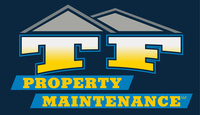
Turnkey property management is a great option if you're looking to invest in real estate. You can find tenants quickly and get your investment property off to a great start with the help a reliable company. Be cautious before jumping into the game.
Before you hire a property manager, do your homework. It's always a good idea get advice from several people. By doing so, you can be confident that you are making the right decisions.
A good property manager can also help you choose the right properties to invest in. Some property management companies specialize in turning distressed homes into profitable investments. They can assist you in choosing a location, finding the right tenant, and managing routine maintenance.

A real estate investment counsellor can help you when you first start out. These professionals can connect you with other investors who have experience buying and managing turnkey properties. These professionals can help you feel confident and make the best investment decisions.
Turnkey property managing is a great way of making money while also investing. You'll be able to make passive income while also having the security of knowing your property is in good hands. Being an investor requires a lot more time and energy than running a business. But a good property manager can help free up your time to concentrate on your business.
One of the benefits of a turnkey property is that you don't have to worry about making repairs. It can be a drawback, however. The cost of repairing your property can add up quickly.
Another thing to consider when assessing your options is the reputation of the property management company. There are many scammers out there who take advantage investors. It is important to ensure that the company with whom you are going to do business has a good track record of providing high-quality service.

Another benefit of hiring a property manager is that it will be easier to fill vacancies. The housing market is improving, but there is still a lack of homes available. The best way to fill vacant properties is for property managers and agents to find new tenants who are willing to move in.
Finally, turnkey property management can save you from having to deal with unexpected emergencies. You are likely to encounter some problems if you have a rental property. Property managers can manage evictions and collect rent for you.
You should ensure you're getting the best property manager services. Although it is an additional expense, a property manager can make your life easier. A company that is reliable can make sure you get the best possible income.
FAQ
Are handymen insured?
Yes! Yes. Most insurance companies cover liability claims over $1 million for accident property damage or bodily harm. Your insurance company will usually compensate you for any damages that occur during the project.
How many hours does it normally take to complete a typical DIY project?
The average DIY project takes two to four hours. The difficulty and complexity of the project will affect how long it takes.
Why should I hire a handyman rather than doing it myself?
A handyman can save you time and money. Not only will you save time, but you also avoid the hassle of hiring another person. Hire a handyman to help you with your job.
Do you have any suggestions from a handyman on how to improve your home?
Absolutely! True, a handyman can be trained in any area of home repair or maintenance. He or she is trained in what repairs are needed and what does not. So don't hesitate to ask for advice whenever you need it.
What qualifications are needed to be a handyman
The most important qualification you'll need as a handyman is a patience. You should also have experience working on electrical systems, carpentry skills, plumbing knowledge, and a strong understanding of home maintenance.
There are many opportunities for people with the right skills, but you may not be qualified if your knowledge isn't up to scratch.
A school that specializes is a good place to start your training.
Statistics
- With a strong housing market, the handyman and general maintenance worker industry are expected to grow by nearly 10% in the next decade. (housecallpro.com)
- A franchise was approximately $110,000 with a franchise fee of $14,900, according to a spokesperson for a national handyman franchise. (en.wikipedia.org)
- An estimate was that in 2003, the market for home maintenance and repair spending was up 14% 2001 to 2003. (en.wikipedia.org)
- Our handyman services for seniors are provided by professional senior helpers who have been serving the community for over 20 years with 98% customer satisfaction. (cantatahomeservices.org)
- Mila keeps a commission of 20% for each completed service performed by Friends and charges various service fees regarding work done by Pros. (appjobs.com)
External Links
How To
How to Replacing a Broken Tile
Step 1: Remove the old tiles.
The tiles should be removed from the flooring and placed aside. If you plan to use these tiles later, it is important that you keep them in good condition. If they're damaged or missing pieces, note which ones they were so you don't run into problems finding replacements.
Step 2 - Select New Tiles
You can take a look at the different options for tile replacement.
-
You should find a similar tile to the one that you've just taken out.
-
To find the right piece, take the measurements you took as you were removing the tiles. This allows you to easily find the perfect size without needing to measure again.
-
Consider looking for colors, patterns, textures and sizes in a variety of shapes and colors.
-
Consider what grout you prefer to use. Some people prefer solid color; others enjoy mixing it up.
-
It is important to ensure that the tile you choose resists moisture.
-
Also, think about where you want to place your new tile. This will help you save time and money.
-
Once you've decided on your tile, you can order it online or by calling your local Lowe's to place your purchase.
Step 3 Install the new tiles.
To install your tiles, follow the same procedure as before. Make sure they are aligned correctly so that they fit together perfectly.
Step 4 – Clean up
Be sure to sweep up all debris from the floor before applying the final protective layer.
This will stop dirt and dust from entering the cracks between tiles.
Step 5: Sand down the Floor
After you have cleaned everything, sand the floor to remove any particles that were left from the previous step.
Step 6 -- Finish Off
Apply the protective coatings once the floor is smooth. It's important to wait until this point because wet paint can stain the surface of the new tiles.
To help prevent stains, you could always use a product called 'damp-anddry' on your floors.
However, it will not cover all possible problems that may arise after you have installed your tiles. You might want to add an anti-slip coating to the protective layer if there are a lot of children.
And finally, remember to leave the protective sealer on for several weeks before moving back into your home.